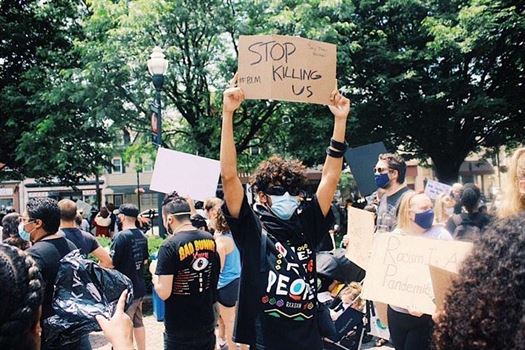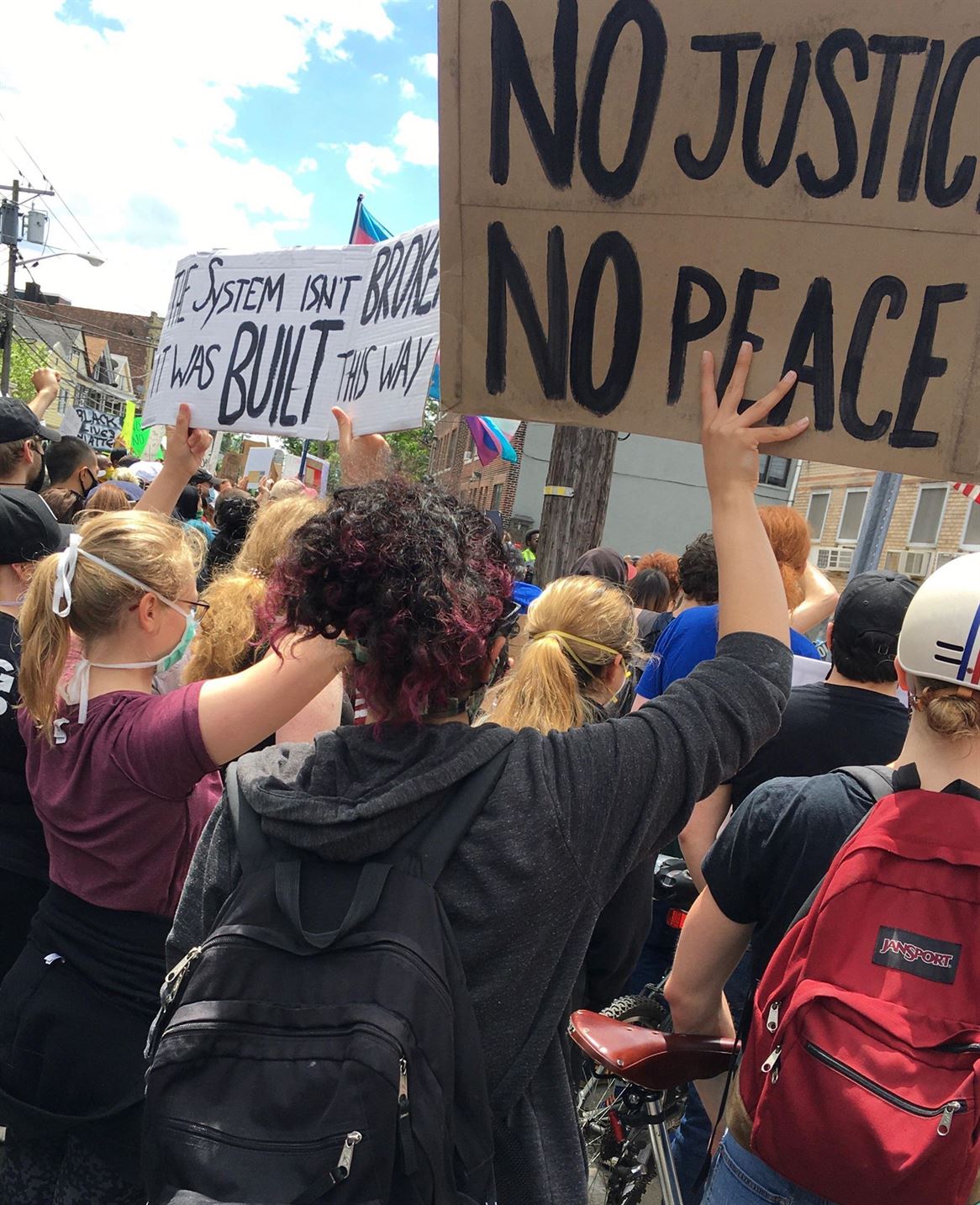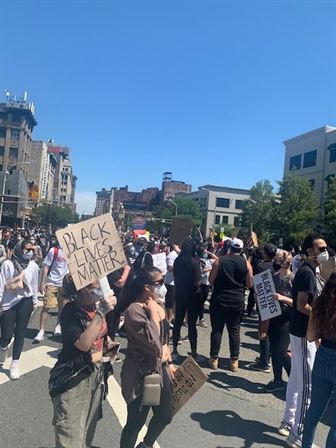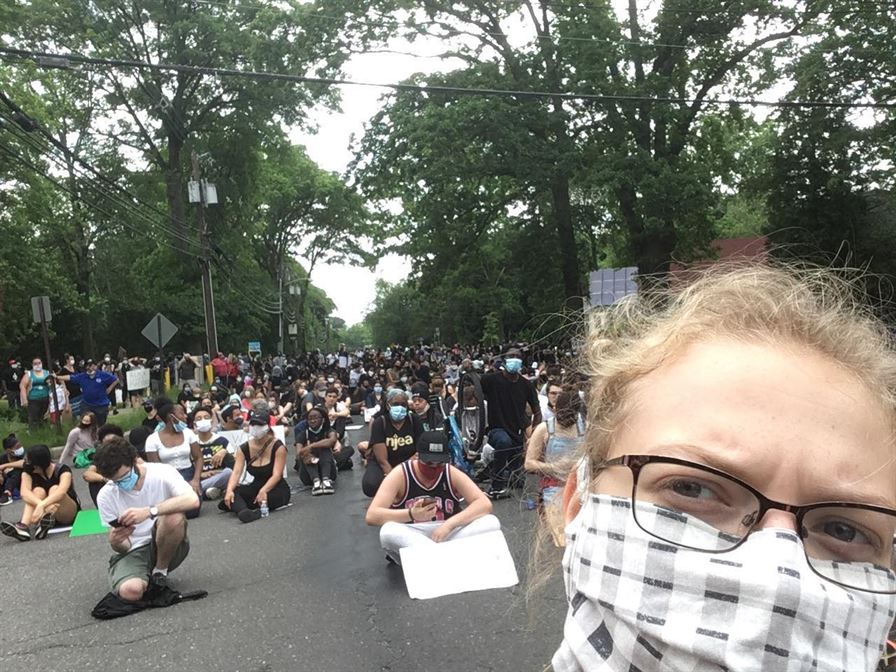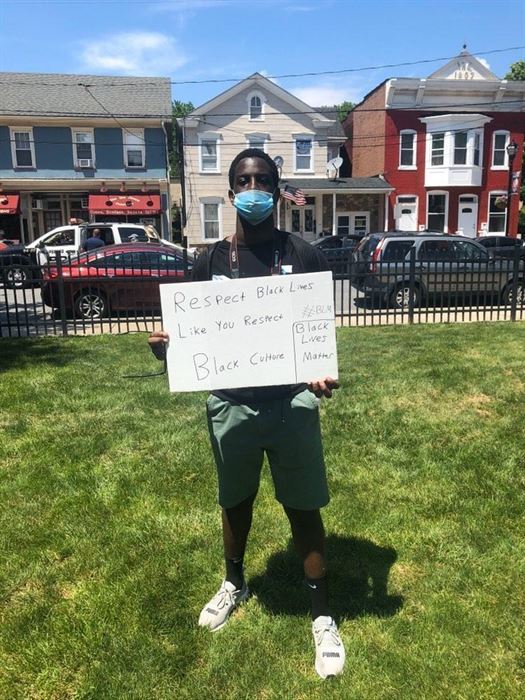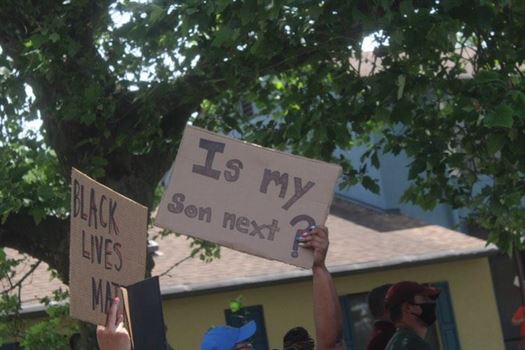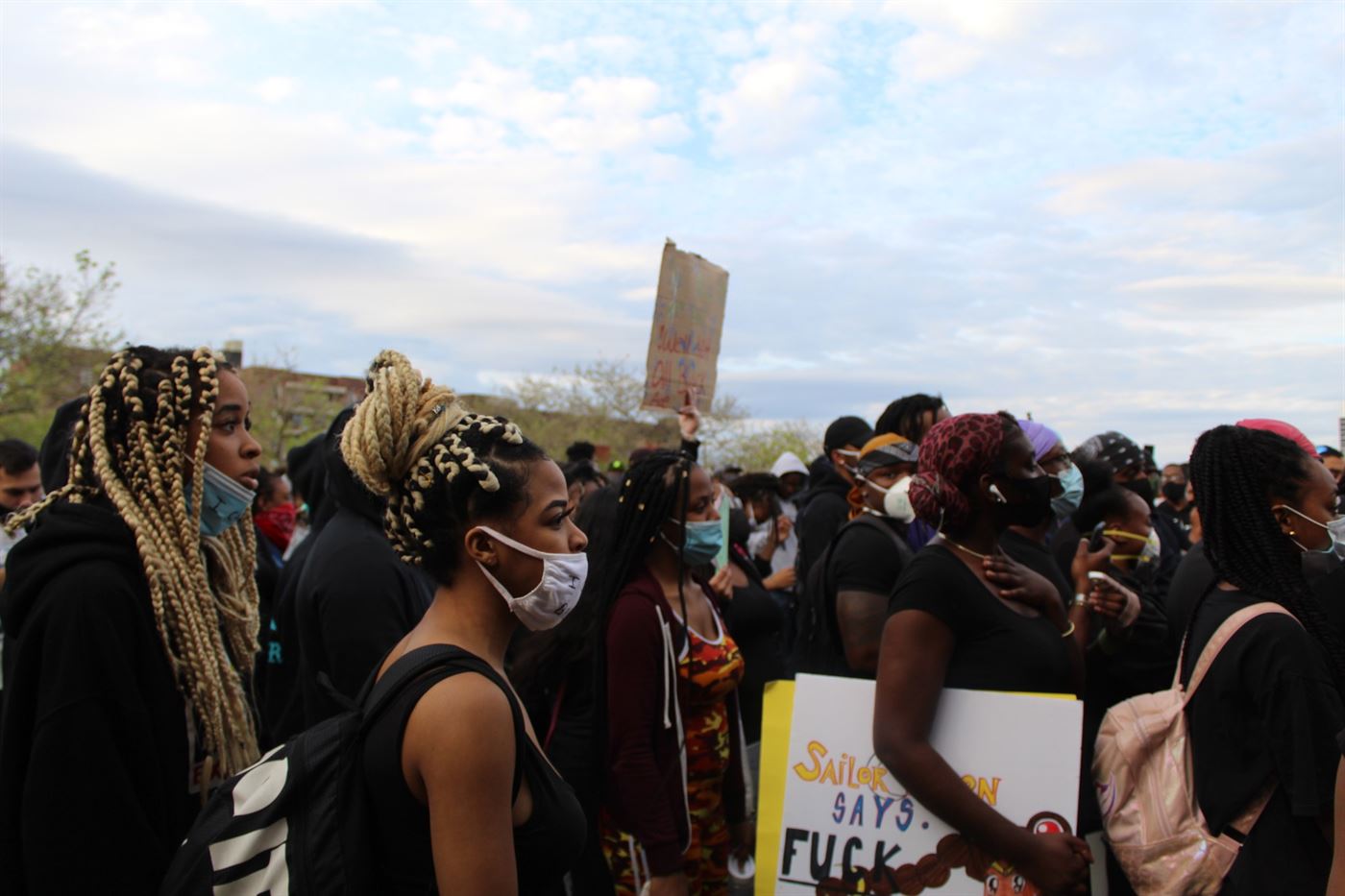The Black Lives Matter movement made their voices heard amidst the coronavirus pandemic after the murder of George Floyd, in a cry for defunding the police and reforms in the United States justice system. Along with this, Montclair State University students are doing their part to stand up for the lives and rights of oppressed people of color.
Montclair State alumni and students have been getting involved in protests, donations and other methods to make their voices heard.
The Student Government Association (SGA) recently made a statement in support of the Black Lives Matter movement on their Instagram page, serving as the voice of the student body on campus.
“The Student Government Association will not stand for discrimination, racism, or prejudice. Let your voice be heard. We are for the people!” The SGA said.
The SGA is not the only organization on campus that has shown support for Black Lives Matter. The Black Student Union (BSU) president Fatou Amar has also spoken out in support of the movement.
“It saddens me to know that we have been fighting the same battle for over 400 years, but the fight will not stop until we receive the justice that we deserve,” Amar said. “It is clear that our community is suffering deeply during this time, but we are strong and we will rise just like we always do.”
The Montclair State community has done more than make statements.
Amira Lawson, a senior psychology major and BSU vice president, attended a protest in Newark, New Jersey.
“[The protest] started at like 12 p.m. and by 12:30 p.m. the streets were blocked off, filled with thousands of people and was held by the organization POP [People’s Organization for Progress],” Lawson said. “They had a microphone and somebody was guiding the chants.”
The protests start at one location and then the crowd often marches to another.
Agnes Amarfio, a senior communication and media arts major, attended a protest in Far Rockaway, New York, that began on Mott Street and ended at a ball park. Another student, Joni Mae De Los Santos, a junior journalism major, started in Foley Square in New York City and marched through the streets.
These protests were organized in order to express frustration in regards to the recent violent handling of the Black community that has occurred at the hands of the police.
Amarfio expressed that ultimately it is not just venting, but change that is needed.
“The number one message that was being put out there is we want peaceful coexistence,” Amarfio said. “In order to do that there needs to be certain laws that are put in place and it can’t be all taking on their part. There also has to be some giving as well.”
There are some people who are wary of protests due to the displays of looting and violence on TV. Many of the people interviewed expressed that they did not see any violence.
Emma Iacometta, a Montclair State alumna, has attended nine protests in New Jersey and did not see violence at a single one.
“The fact that we are out here protesting against violence and being labeled as violent just doesn’t really make sense. I haven’t experienced any of that in New Jersey at all,” Iacometta said.
The instances of violence that have been portrayed at Black Lives Matter protests did not come from the protesters themselves. De Los Santos pointed out that looters joined the protest at some point after New York City’s curfew.
“It was very obvious they were not with the protest. They tried to get the other protesters that were already marching since 12 p.m. to get violent,” De Los Santos said.
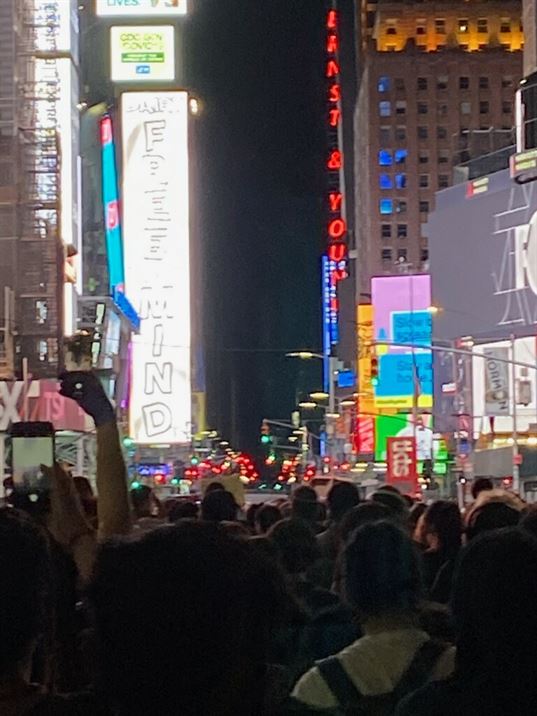
The police begin to block the protesters route in New York City.
Joni Mae De Los Santos | The Montclarion
While the other protesters were exhausted from marching, the incomers had all of their energy set on destruction. De Los Santos saw many protesters try to hold the looters back so the police were not tempted to intervene. She also spoke about how the police continuously cut off the protester’s routes in an effort to instigate them.
“I thought that was supposed to be organized until someone had told me later that it was actually blocked off and we couldn’t move. So we had a sit-in. The organizers had told everyone to leave if they weren’t ready to risk their life,” De Los Santos said.
In spite of De Los Santos’ troubling account, the majority of protests are not as violent as portrayed on the news.
A hesitance to protest can be expected in some people. However, people, such as Lawson, claim that staying silent can make you a part of the problem.
“We’ve been silent for too long and nothing gets changed,” Lawson said. “As you can see when we started using our voices, we began marching, we began protesting, you see the changes happening.”
Before going to a protest, Corey Annan, a junior television and digital media major, claims that doing some research on nearby protests can help alleviate some worries. For example, a protest run by seasoned protesters might make an attendee feel more safe.
“I think anyone can lead a protest,” Annan said. “But I think someone with experience, someone who has led protests before is very important to know.”
Hesitance is not the only reason people avoid protests. During the new coronavirus (COVID-19) pandemic, people must also fear for their health. Immunocompromised people are at high risk of catching the COVID-19 when near multiple people and crowds.
Gabriel Gomez, a senior theater studies major, also found a way to support the movement. Gomez had people donate money to the Bail Project for his birthday and raised over $200. The Bail Project is an organization that provides bail for people arrested at Black Lives Matter protests.
“I chose the Bail Project because it’s something that I stand for,” Gomez said. “I feel that silencing our voice, silencing our first amendment right is a crime in itself.”
Gomez also ran a drag show on his Instagram in order to raise money for various organizations in relation to Black Lives Matter as well as the Trevor Project, a suicide prevention organization aimed at young members of the LGBTQ+ community.
Vanessa Fingerlin, a junior television and digital media major, demonstrated that you can protest and donate. She attended a protest in Toms River, New Jersey. Fingerlin also draws portraits of people in exchange for donations to nine organizations such as the Minnesota Freedom Fund, and has raised $235 so far.
“I saw everyone protesting and I saw everyone using their voice and I felt like I could have helped more by using something that I’m already good at, because I’m not a public speaker and I’m not as confident and I’m not as brave as other people,” Fingerlin said.
It is important to note that Black Lives Matter stands for all Black lives, including those of the LGBTQ+ community. The height of the protests took place during Pride Month. Gomez pointed out that the Pride Parade started as a riot.
“It was Marsha P. Johnson and Sylvia Rivera, who is a Hispanic, drag queen [transgender] woman who also fought for our rights to be who we are,” Gomez said.
Black people in the LGBTQ+ community are often marginalized on two different levels. This is why it is important that the movement encapsulates all Black lives into it.
“Marsha P. Johnson and Sylvia Rivera would be cheering all of us on in the Black Lives Matter movement,” Gomez said. “[They] stand for, you know, all Black lives, not just Black men and Black women, but Black [transgender] men and Black [transgender] women.”
The representation of all Black lives makes the movement important to many. There are other reasons, however, that people fight for the cause. Black Lives Matter is important to Lawson because she is tired of seeing people from her community grieve.
“We’re seeing mothers on the media on the TV crying over losing a son, losing a daughter. It sucks, it’s disheartening,” Lawson said. “When it affects them, it affects me because, again, you never know when it can be you.”
Amarfio fights for Black Lives Matter because she is tired of feeling unsafe.
“If you see people that look exactly like you and it looks like they are being slaughtered, they are being put down you’re not going to feel safe,” Amarfio said. “I want to stand up for my community and I want to stand up for my race and say, ‘Hey, I’m a human being too and I’m not so different from you.’ You can live here with no fear, why can’t I live here with no fear?”
The Black Lives Matter movement is vital in making not just communities, but the United States and elsewhere feel safe. The Montclair State community has rallied together behind the movement in order to fight for what is right.
Amarfio shared a well known quote to sum up how anyone can help the movement.
“There’s this phrase you hear around New York all the time, you see it in the subways and it goes like, ‘If you see something, say something,'” Amarfio said. “I feel like that is a thing. If you see something and you think that it is wrong, say something.”

